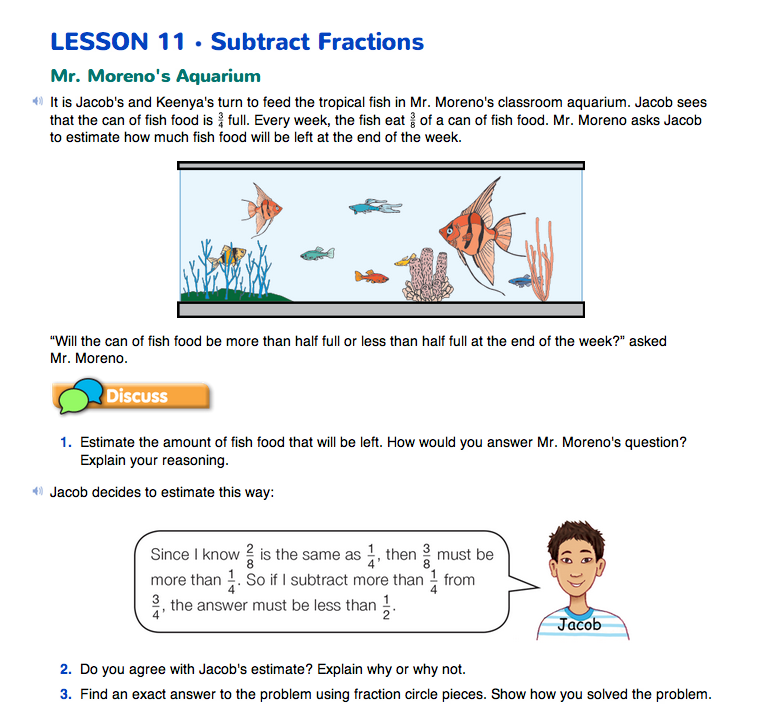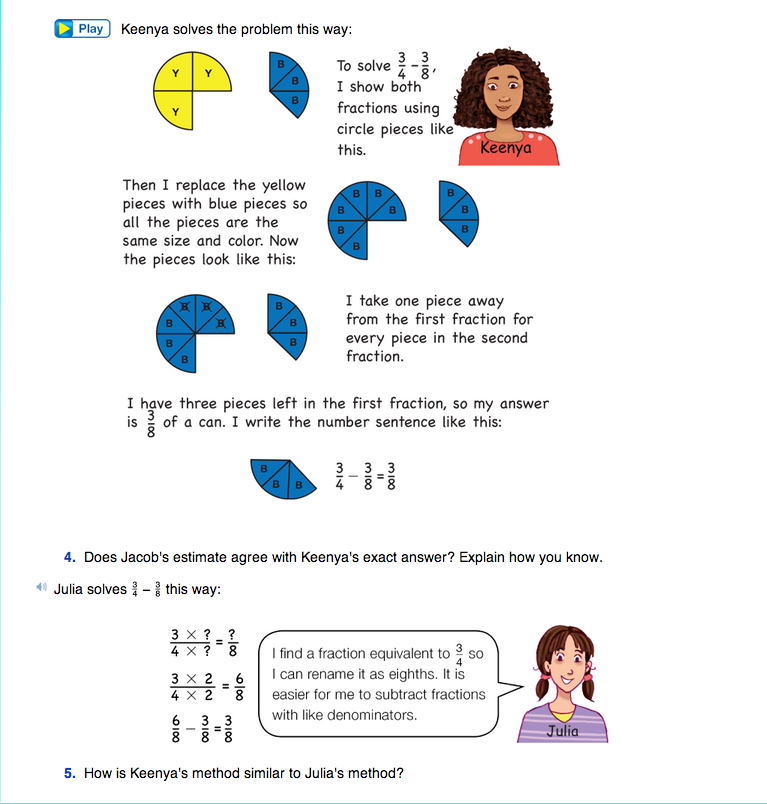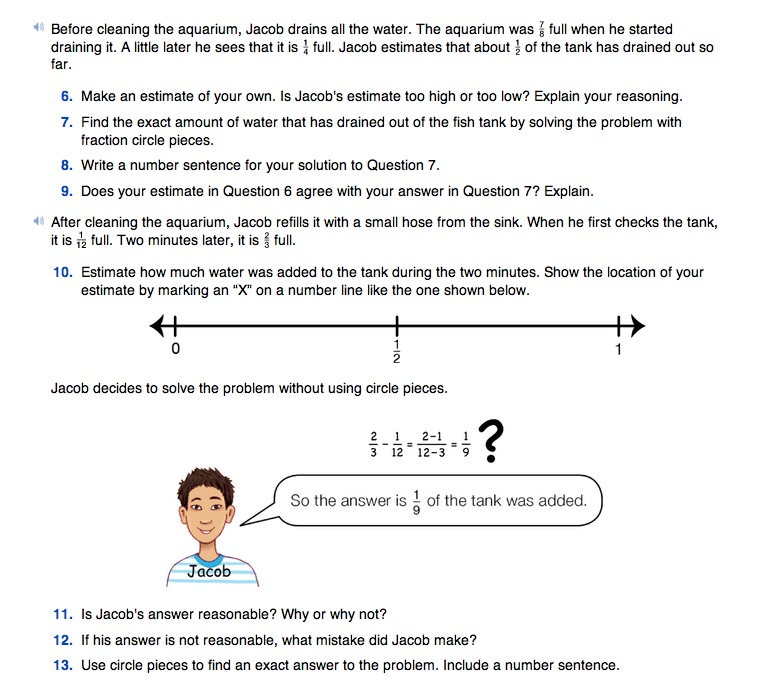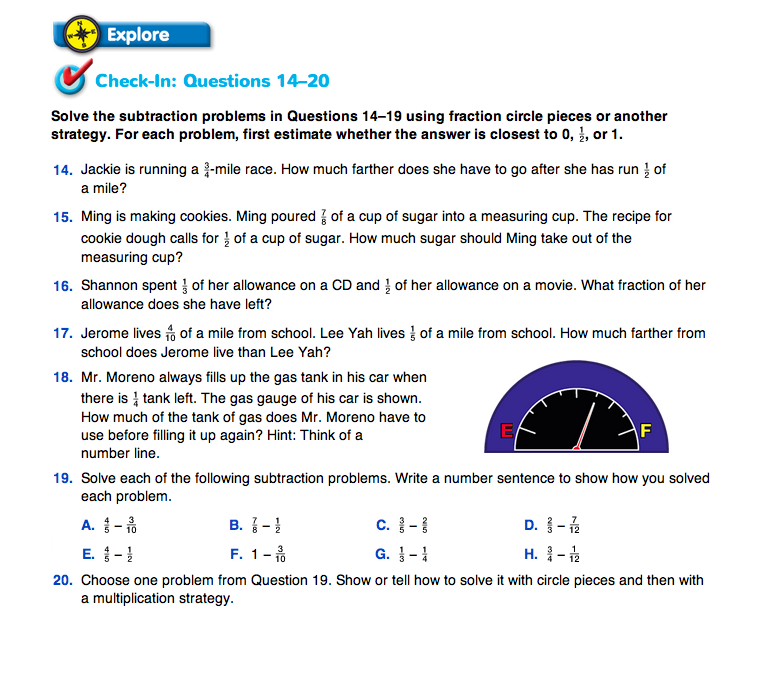Subtract Fractions
Est. Class Sessions: 2Developing the Lesson
Part 2. Subtracting Fractions to Solve Problems
Read the opening vignette about Mr. Moreno's aquarium on the Subtract Fractions pages in the Student Guide. Ask students to work with a partner to estimate whether the can of fish food will be more or less than 1/2 full at the end of the week (Question 1). Read Jacob's method for estimating the answer to the problem with the class.
Ask:
Have students model and solve the problem to find an exact answer using fraction circle pieces (Question 3). Remind students to write number sentences for their solutions and to compare their exact answers to their estimates. Ask several students to share their strategies with the class using display circle pieces. Read Keenya's method for solving the problem with the class. Discuss how Jacob's estimate agrees with Keenya's exact answer (Question 4).
Ask:
Next, read Julia's method for solving the problem. Julia uses multiplication to find an equivalent fraction with a common denominator.
Ask:
Have students work with partners to solve Questions 6–8. Discuss students' estimates and solutions using Question 9.
Questions 10–13 lead students to identify a common misconception in a procedure for subtracting fractions. As with fraction addition, a common mistake is to try to perform the operation on the numerators and the denominators separately. Students identify that this method leads to an answer that is not reasonable, and that it does not make sense in terms of the circle pieces model. Students find an exact answer using fraction circle pieces in Question 13.
Have a student use circle pieces to model their solution to the problem 2/3 − 1/12 . If a method other than the single-color method is used, ask another student to show how 2 orange pieces ( 2/3 of the circle) can be replaced with 8 black pieces ( 8/12 ). 1 black piece can be removed to leave 7 of the pieces ( 8/12 − 1/12 = 7/12 ). Then make the connection between the single-color method and using multiplication to find equivalent fractions with common denominators.
Ask:
Assign Check-In: Questions 14–20. In these questions, students practice solving more subtraction problems. Remind students to first estimate answers relative to benchmark numbers of 0, 1/2 , or 1. Question 19 provides more practice with fraction subtraction and writing number sentences. In Question 20, students explain their solution strategies.
















